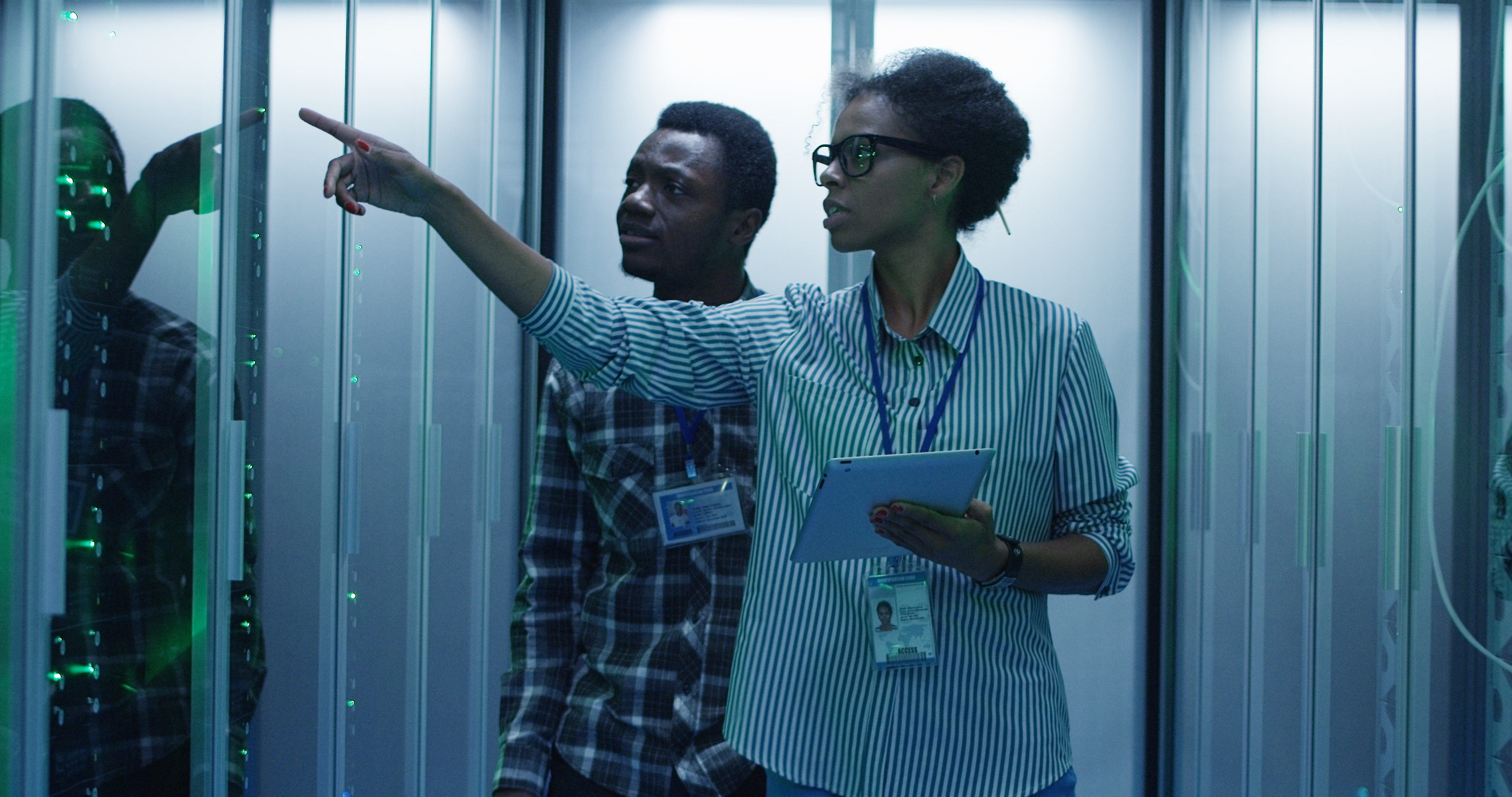Five common barriers holding back women in tech
Women in tech still face significant challenges in the workplace


It’s common knowledge that the tech sector isn’t as diverse and inclusive as it can or should be. According to career advice site Women in Tech, only 26% of tech-related jobs are held by women, so what’s holding them back?
Five common obstacles facing women entering the industry were recently highlighted in the report “Breaking Barriers: Women in Tech Speak Out”, jointly published by Sage, Tech Returners, and Reframe Women in Tech.
The report suggests lack of awareness or contact with the industry, lack of female role models, low confidence, exclusionary hiring processes, and discrimination are all frequently encountered by those entering the industry.
Lack of awareness and industry contact
One common problem women report facing is having limited exposure to and awareness of the tech industry, which hinders their ability to explore opportunities and develop the right skills. This issue is often traced back as far as their school days, where access to technical learning heavily depends on location and educational policies.
Read more
Beckie Taylor, CEO of Tech Returners, believes there’s still very much a disconnect around the education system and industry. She recommends businesses engage with schools to discuss ways to bridge the gap and educate all pupils about the variety of opportunities open to them.
“There’s a Manchester consortium, with the likes of PwC and Microsoft, coming together to put on events for teachers to talk about the different roles in the tech industry, and the different pathways into careers in technology,” she gives as an example.
“Women in Tech North also holds online meet-ups with schools, where pupils can ask questions to the community about different types of roles and what it’s like to work in the industry.”
Sign up today and you will receive a free copy of our Future Focus 2025 report - the leading guidance on AI, cybersecurity and other IT challenges as per 700+ senior executives
Not enough role models
Seeing people like them in aspirational and successful tech roles can empower more women to choose tech careers and help end the perception that technology’s a ‘man’s realm’.
Businesses should do more to showcase their female talent – whether that’s via case studies or larger external campaigns and awards. “[It’s] really important that we have more prominent female leaders who are willing to talk about their successes and how they overcame challenges in their career,” says Nicola Martin, head of quality engineering at Adarga and chair of the software testing specialist group at BCS, the Chartered Institute for IT.
Supporting women into these leadership roles is also key, which can be facilitated by providing more mentorship, training, and development opportunities.
Confidence issues
Multiple studies over recent years have repeatedly put the percentage of women working in tech roles who suffer from imposter syndrome at around 70-75%.
According to the Breaking Barriers report, 84% of respondents didn’t apply for a tech role they were interested in. Of these, 80% said they didn’t believe they had the right experience, while 71% said they worried they didn’t have the right skills.
RELATED RESOURCE

Discover how you can unlock your team’s potential
DOWNLOAD NOW
“Imposter syndrome often comes up at women in tech events, especially from those just coming into the sector, which is crazy, because they have great transferable skills,” says Martin. “It’s a big issue and I often suggest mentoring or coaching.”
Taylor says that confidence is a big issue for women looking to return from a career break, as many traditional hiring routes set aside CVs with gaps. This can knock returners back, making them question their relevance and whether they can balance their work and home commitments.
Not only should businesses do more to change the narrative around career breaks and focus on their value in terms of transferable skills and experience gained, but also invest in confidence support for women at work.
This can be coaching, mentoring, access to counselling, or financing participation is programmes like the Confidence Collective – designed to develop and empower women to own their journey into the next stage of their career, and Google’s #IAmRemarkable initiative.
Exclusionary hiring processes
Breaking Barriers found that many of the women surveyed had experienced intimidating and inflexible hiring processes that often prevent them from applying for tech roles.
Much more can be done by businesses to adopt clear and inclusive language in job descriptions, reduce bias in the hiring process through anonymised CVs and promote flexible working policies, which are in much greater demand by all post-pandemic, not just working mothers.
Many of the larger multinationals are already progressing in this area thanks to dedicated diversity and inclusion teams, but Taylor acknowledges that others haven’t got the time or money to work proactively on this.
“SMBs, startups; they might not have the resources to dedicate to this,” she says. “I think the solution lies in best practice developed through a consortium of these larger companies developing best practice frameworks and toolkits that provide education and support to all organisations.”
Discrimination
Discrimination goes beyond hiring however, and doesn’t just revolve around sexism – ageism, racism and homophobia are issues that affect the wider tech community and need to be stamped out.
Implementing mandatory EDI training and policies can help, as can establishing a confidential reporting mechanism to address concerns.
Small changes can make a big difference, says Dr Laura Norton, head of EDI at the Institution of Engineering and Technology (IET). She recommends businesses get better at sharing their inclusive practices and processes.
“Our recent Inclusive thinking campaign is all about individuals sharing their tips and insights on how they’ve embedded EDI within their work, organisation and the wider engineering and technology community, passing this on for others to learn from.”
Act now
There have been many reports on discrimination, exclusionary practices and processes over the years, but it’s important we act now. “Without diversity we won’t get the creativity, innovation and collaboration needed to solve complex problems and create innovative solutions,” says Norton.
“These findings are concerning – we also need to make sure that the points raised, such as confidence, aren’t put back to women as their issue. This is about women feeling underrepresented for many years, and it’s a problem for all of us,” says Norton.
“We know that it’s not only women who are underrepresented in the sector – this also includes black and minoritized ethnicities, disabled people, socio-economic backgrounds and the LGBTQ+ community. To improve our world and shape our future we need to include diversity of talent and knowledge in all forms.”
Keri Allan is a freelancer with 20 years of experience writing about technology and has written for publications including the Guardian, the Sunday Times, CIO, E&T and Arabian Computer News. She specialises in areas including the cloud, IoT, AI, machine learning and digital transformation.
-
 Trump's AI executive order could leave US in a 'regulatory vacuum'
Trump's AI executive order could leave US in a 'regulatory vacuum'News Citing a "patchwork of 50 different regulatory regimes" and "ideological bias", President Trump wants rules to be set at a federal level
-
 TPUs: Google's home advantage
TPUs: Google's home advantageITPro Podcast How does TPU v7 stack up against Nvidia's latest chips – and can Google scale AI using only its own supply?
-
 Young women are keen on pursuing STEM careers, but they’re still facing huge barriers
Young women are keen on pursuing STEM careers, but they’re still facing huge barriersNews From fears that STEM courses will be too demanding to concerns about family responsibilities, women aren't taking up training they'd actually like to do
-
 It’s the end of the road for Women Who Code, following loss of “critical” funding
It’s the end of the road for Women Who Code, following loss of “critical” fundingNews The organization supporting women in the tech industry is being dissolved 13 years after it was founded
-
 Report: Brexit and COVID to blame for lack of diversity in tech
Report: Brexit and COVID to blame for lack of diversity in techNews One in two surveyed respondents cited the two events as key factors in the failure to improve diversity in leadership roles
-
 Australia allocates $6.7 million to advance women in STEM initiatives
Australia allocates $6.7 million to advance women in STEM initiativesNews Women make up only 28% of the country's STEM workers
-
 IT Pro Panel: What’s stopping diversity in tech?
IT Pro Panel: What’s stopping diversity in tech?IT Pro Panel The need for more diversity is well established - but we still have a way to go
-
 AWS partners with NPower to boost jobs for women of color in tech
AWS partners with NPower to boost jobs for women of color in techNews Command Shift will find tech jobs for underserved group
-
 AWS and The Dream Collective aim to bring more women into tech
AWS and The Dream Collective aim to bring more women into techNews The SheDares learning program offers women expert advice on how to pursue a career in technology
-
 Why aren’t women heading more tech startups?
Why aren’t women heading more tech startups?In-depth Women are in incredibly short supply as founders of top tech firms. What’s going on, and can the situation change for the better?
